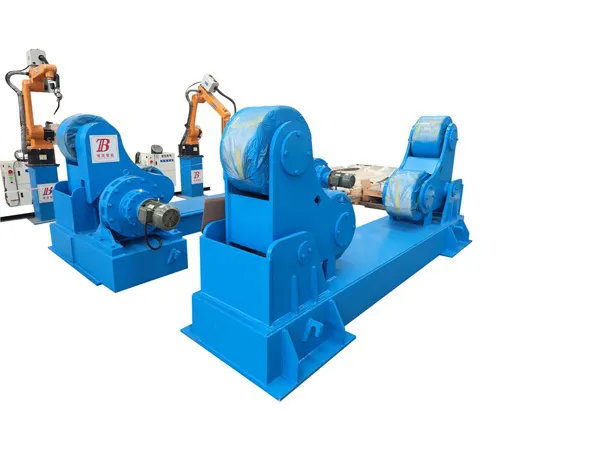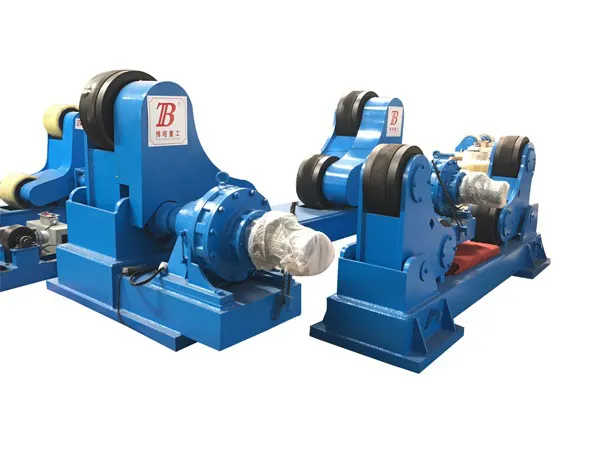What are the difference between self-aligning and conventional welding rotator?
Welding rotators are essential tools in the fabrication of pressure vessels, tanks, pipes, and other cylindrical workpieces. They are designed to rotate heavy components during the welding process, ensuring smooth operation, uniform weld seams, and higher efficiency. While there are different types of welding rotators, the two most commonly compared are self-aligning welding rotators and conventional welding rotators.
The main difference lies in their wheel adjustment mechanism and adaptability to different workpiece diameters:
Difference Between Self-aligning and Conventional Welding Rotator

1. Self-Aligning Welding Rotator
Mechanism: Self-aligning rotators are designed with a unique mechanism where the rollers automatically adjust to the diameter of the workpiece. This is typically achieved through a system of pivoted arms or a walking beam design that allows the rollers to move closer together or further apart as needed.
Key Features:
Automatic Diameter Adjustment: This is the most significant feature. Once the workpiece is loaded, the rollers adjust themselves to securely cradle it.
Versatility: They can handle a wide range of workpiece diameters without manual adjustment of the roller spacing.
Ease of Use: Reduces setup time and operator effort, especially when frequently changing workpieces of different sizes.
Even Weight Distribution: The self-aligning mechanism often ensures a more even distribution of the workpiece weight across the rollers.
Higher Initial Cost: Generally more expensive due to the more complex mechanical design.
Best Suited For:
Workshops handling various diameters of cylindrical workpieces (e.g., pipes, tanks, pressure vessels).
Production lines where frequent changes in workpiece size are common.
Applications requiring quick setup and minimal manual intervention.
Automated welding processes where consistent rotation is crucial.

2. Conventional (Adjustable) Welding Rotator
Mechanism: Conventional rotators require manual adjustment of the roller spacing to accommodate different workpiece diameters. This typically involves moving the roller carriages along a frame and securing them in place.
…
More detailed information about difference between self-aligning and conventional welding rotator can be found at: https://www.bota-weld.com/en/a/news/difference-between-self-aligning-and-conventional-welding-rotator.html


